
About Andrew Cusack
 Writer, web designer, etc.; born in New York; educated in Argentina, Scotland, and South Africa; now based in London.
Writer, web designer, etc.; born in New York; educated in Argentina, Scotland, and South Africa; now based in London. read more
News
Blogs
Reviews & Periodicals
Arts & Design
World
France
Mitteleuropa
Knickerbockers
Argentina
The Levant
Africa
Cape of Good Hope
Netherlands
Scandinavia
Québec
India
Muscovy
Germany
Academica
David Goldblatt: Structures
“THE FIRST GROUP of photographs that I attempted of structures,” writes photographer David Goldblatt, “was a series made in 1961 on places of worship on the Witwatersrand. I came to this from two starting points. The first was a fascination with the idea of faith. Notwithstanding recurrent nightmares during childhood about the infiniteness of everlasting hellfire and uncertainty over the domicile of my unbaptised Jewish soul in the hereafter, arising from an otherwise happy primary school education by nuns, I don’t think I was ever able to believe in or pray to the deity with much conviction — except momentarily under extreme threat of imminent disaster. Neither nuns nor rabbi could ever enable me to transcend the banal with that leap of faith required of true believers. … I was — am — then, generally sceptical of believers’ beliefs but also in awe, and sometimes envious, of their ability to believe. If blind, unreasoning faith often repels me it sometimes moves and always intrigues.”
“Thus it was endlessly mysterious, even incredible to me that people — for the most part ‘ordinary’, ‘practical’ people, probably not much given to abstruse thought and discussion — should pour such effort and resource into the erection of structures devoted to so abstract an idea as God.” The photographer, understandably, doesn’t understand that, for we Christians, God is no less abstract than our father, mother, or neighbour down the street. “The ubiquity and persistence of the phenomenon, the immensity of humankind’s investment in God was to me quite awesome.”
“The second starting point for this early series of photographs of structures was an inchoate but growing awareness that whereas some structures seemed quite detached from this place, the Witwatersrand or, more broadly, South Africa, others grew almost viscerally from it. This seemed to have less to do with architecture than with indefinable qualities of ‘belonging’. I wanted to explore these notions and bring them into the light with the camera.”
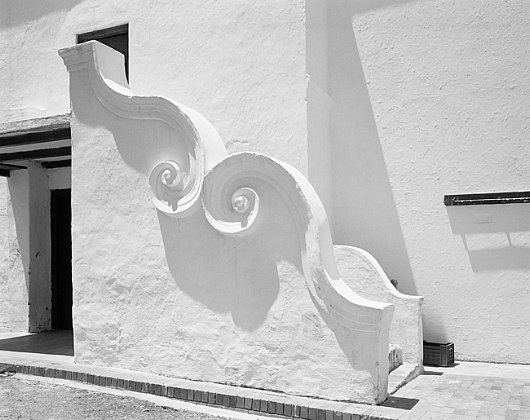
Stairway to a storeroom, probably made by slaves in 1781.
Meerlust wine farm, near Stellenbosch, Cape. 24 November 1990
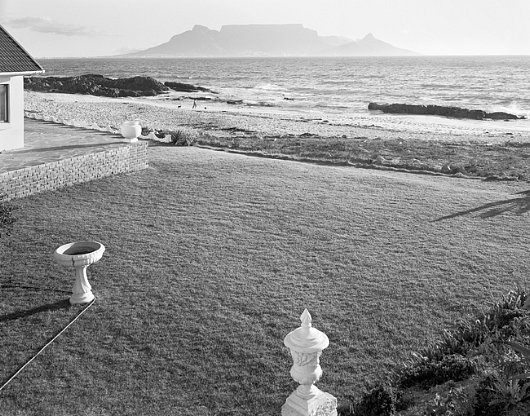
Suburban garden and Table Mountain.
Bloubergstrand, Cape Town, Cape. 9 January 1986
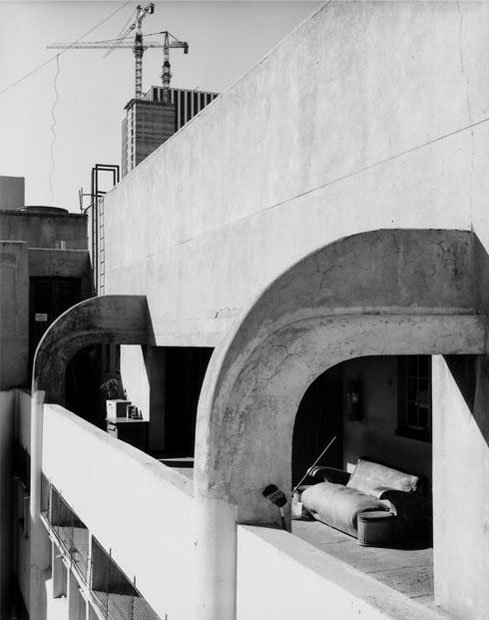
‘Location in the sky’: the servants’ quarters of Essanby House.
Jeppe Street, Johannesburg, Transvaal. 4 April 1984
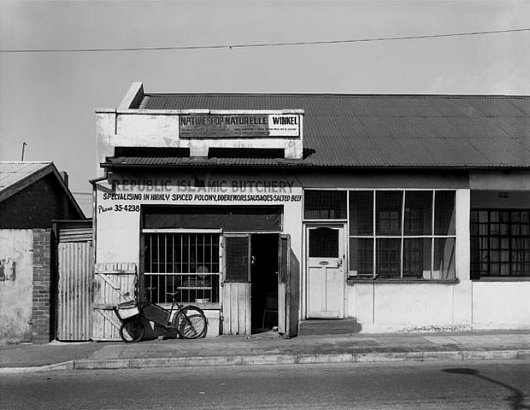
Hassimia Sahib’s butchery before the start of forced removals and demolitions under the Group Areas Act.
Pageview, Johannesburg, Transvaal. April 1976

Hassimia Sahib’s butchery still in business after the destruction of part of the building under the Group Areas Act.
Pageview, Johannesburg, Transvaal. 8 March 1986
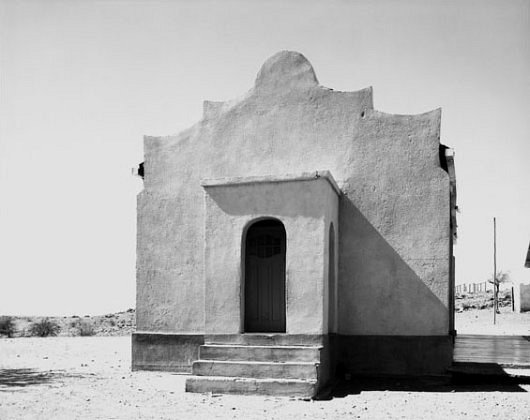
Dutch Reformed Church Mission to Coloureds, completed in about 1980.
Augrabies, Cape. 2 December 1987
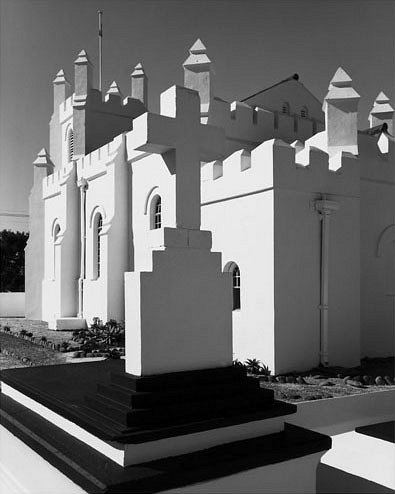
The Village Church, inaugurated on 10 October 1841.
Robben Island. 12 July 1991
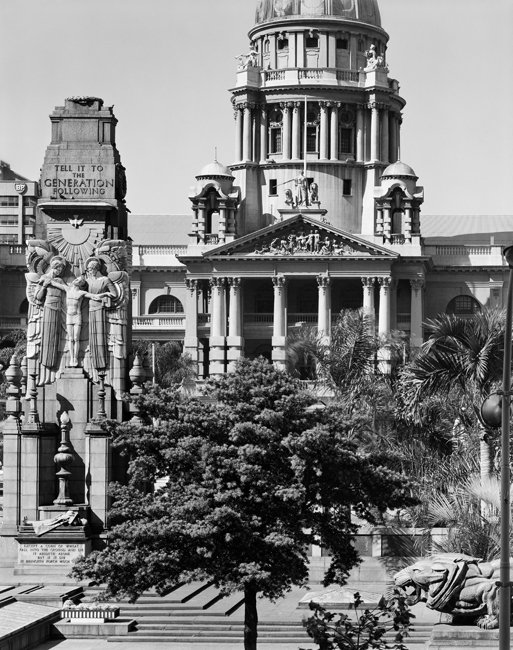
The City Hall, opened on 12 April 1910, and the Cenotaph, unveiled on 7 March 1926.
Durban, Natal. 29 August 1980
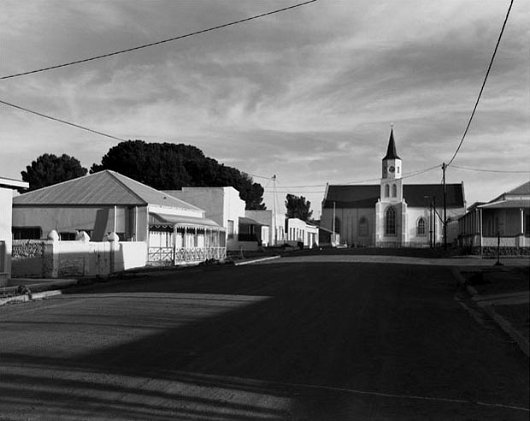
Breë Street and the Dutch Reformed Church.
Philipstown, Cape. 5 July 1986
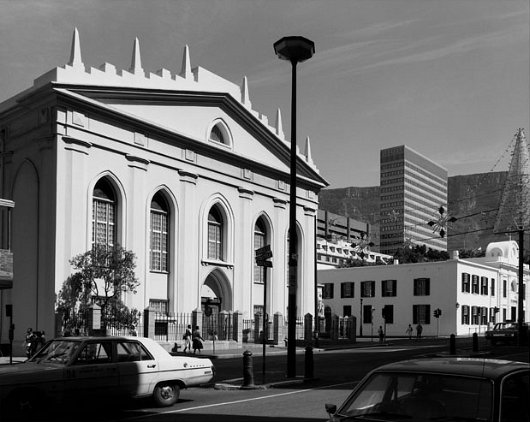
Left: the Groote Kerk, the church of the first parish of the Dutch Reformed Church in South Africa.
Right: the Cultural History Museum, originally the Dutch East India Company’s Slave Lodge.
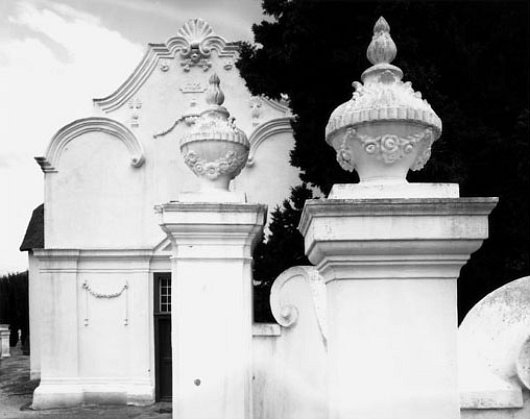
The old Dutch Reformed Church, built in 1756 with the gable and gateway added in 1795, now a museum.
Tulbagh, Cape. 7 February 1993
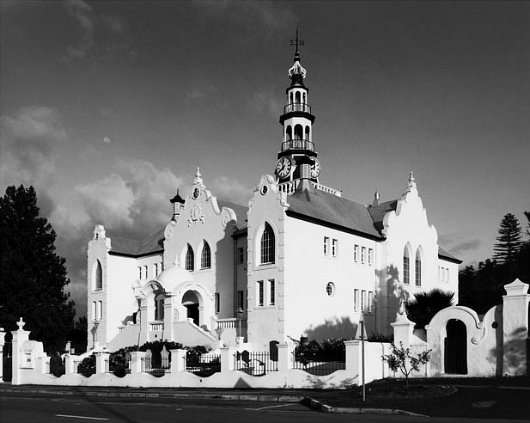
Dutch Reformed Church, built in 1911.
Swellendam, Cape. 9 April 1993
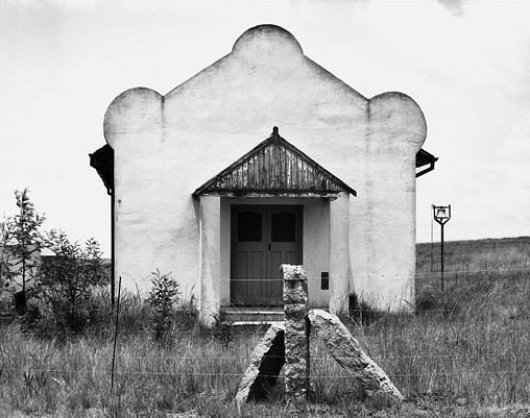
Dutch Reformed Church, built in about 1954.
Lothair, Transvaal. 8 January 1984
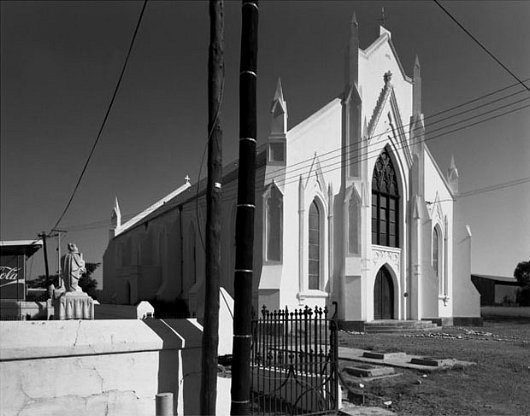
The second Dutch Reformed Church.
Ladismith, Cape. 11 May 1992
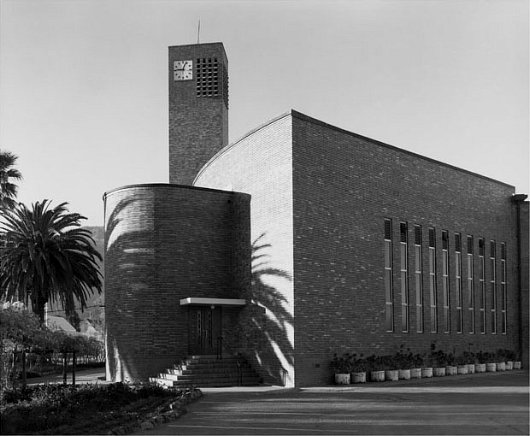
The third Dutch Reformed Church.
Ladismith, Cape. 3 January 1992
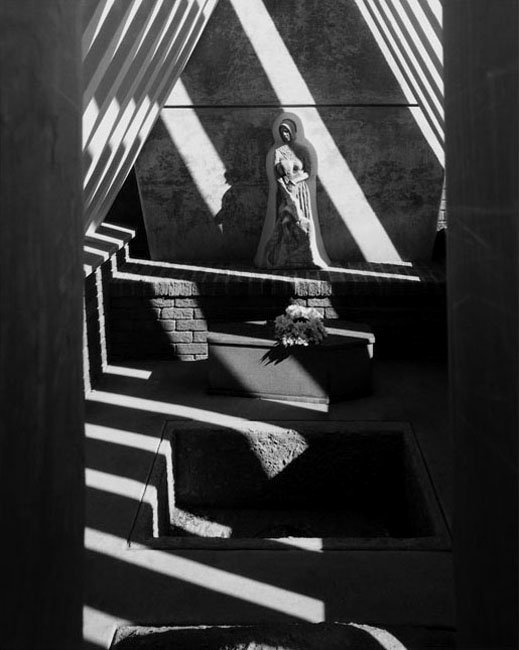
Detail of the Concentration Camp Garden of Remembrance.
Aliwal North, Cape 29 September 1990
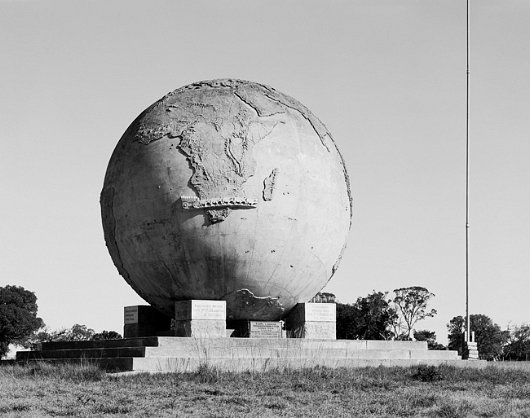
Monument to Karel Landman, Voortrekker leader, unveiled on 16 December 1939.
De Kol, Cape. 10 April 1993
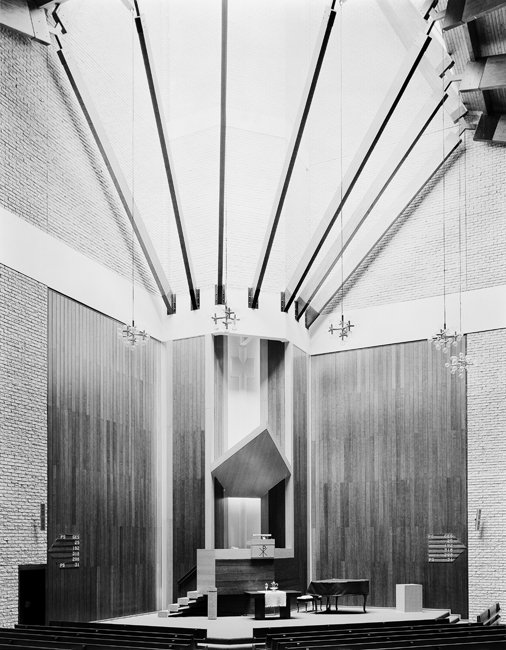
Interior of the Dutch Reformed Church, inaugurated in 1976.
Welgemoed, Cape Town, Cape. 11 January 1992
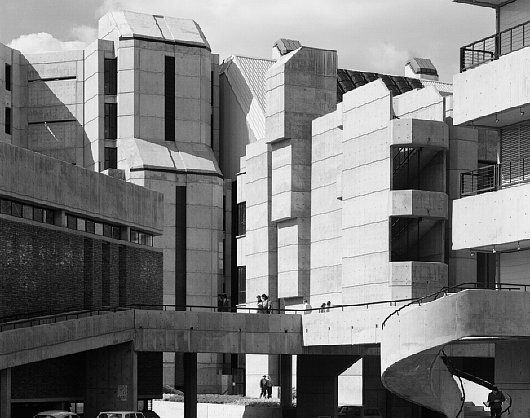
Rand Afrikaans University: the new campus, inaugurated in 1975.
Johannesburg, Transvaal. 1976
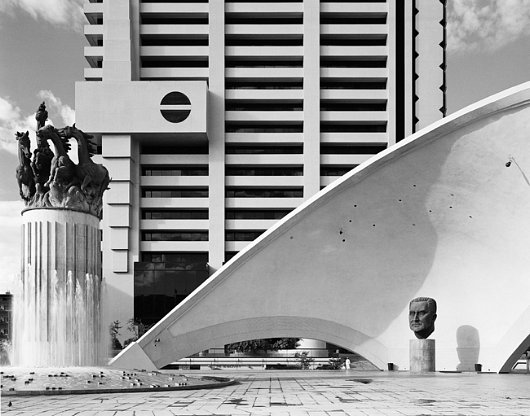
Monuments to National Party leader and Prime Minister, J. G. Strijdom, and to the republic of South Africa, unveiled in 1972, with the headquarters of Volkskas Bank, opened in 1974.
Strijdom Square, Pretoria, Trasnvaal. 25 April 1982
Search
Instagram: @andcusack
Click here for my Instagram photos.Most Recent Posts
- Burns Tower April 19, 2024
- Patrick in Parliament March 18, 2024
- Articles of Note: 13 March 2024 March 13, 2024
- Cambridge March 9, 2024
- Taken on Trust March 4, 2024
Most Recent Comments
Book Wishlist
Monthly Archives
Categories



The photos are OK, but collectively, they make SA look like a very sad, unhappy place.
True. Quite a contrast to these photos:
http://www.andrewcusack.com/2010/01/01/life-in-the-cape/
Andrew
I was intrigued by your blog comments in reference to David Goldblatt.
You post a blog in which you place images by David Goldblatt – I assume that that you did so because you though that either they in themselves or together with the accompanying words were of particular significance.
A user of your blog – S Petersen seeing the pictures says “The photos are OK, but collectively, they make SA look like a very sad, unhappy place”
Your response to this reader / user – is “True. Quite a contrast to these photos: http://www.andrewcusack.com/2010/01/01/life-in-the-cape/’
The photographs that are to be seen on that url are images taken by Bernard Bravenboer. I think that we can agree that Bravenbour’s work is different in style, type and intention to Goldblatt’s
Your response leads me to ask why did post the blog on Goldblatt?
Andrew de Jager
I found the photographs interesting.
Well if you found them interesting why not engage with S Petersen.
I think that your reply trivialized your responses while pandering to his
Is adult engagement not the intelligent and appropriate way to use blog space. I follow your postings from time and was disappointed in how you dealt with this. But hey that is only my opinion.
“A very unhappy place”? I would wager that S Petersen is a young person, for whom black and white photography is almost an unknown. Goldblatt’s photographs are works of art; they also, by themselves, prove the superiority of black and white over colour photography (Bravenboer’s prove it too, but inadvertently).
But Mr de Jager has a point, Mr Cusack: why not defend your choices occasionally?
And here I thought I had engaged him! By responding to him, agreeing with his point, and contrasting Goldblatt’s photos with others (though, yes, the others were different in style, type, and intention).
I am afraid I am closer to simpleton than to great intellect. I see things, I find them interesting, I wonder if others might find them interesting too, and I post them here.
And when I think something speaks for itself (like Goldblatt’s photographs), I tend to keep my silence.
The trouble is that you are too well mannered. But, since most other blogs are so ill-mannered (not to say hysterical), it would a great pity to loose the special quiet whimsy of this site.
Stay as you are, Mr Cusack, stay as you are.
Andrew …
What a magnificently beautiful collection! But I was also impressed with other Goldblatt photographs you posted here about a year ago … so much so that I ordered the book (“Some Afrikaners Revisited”). I went to the website in the link above, but I do not see this as a collection in a book. I shall have to ask David at Select Books in Cape Town; he knows everything about southern African books, as you know.
Once again, thanks.
Rumuunj
LIMBURGIA
I saw that David Goldblatt recently held an exhabition at the Goodman Gallary in Johannesburg – titled “TJ David Goldblatt / TJ: Some things old, some things new and some much the same” – to access a slide show go to http://www.goodman-gallery.com/exhibitions/slideshow/193
As the South Africans reading here will remember, “TJ” was the old designation on motorcar number plates for “Transvaal, Johannesburg”. People would refer to Jo’burg as “TJ” sometimes.
Remuunj
LIMBURGIA
Just for the record, I’m 62, an avid BW phot’r, I thought the photos were good as photos and Mr. C. and I have heretofore never agreed in this forum on anything.
S Petersen
May I ask you how you felt after being directed to Mr Bernard Bravenboer’s photographs by Mr C?
I trust that I have never implied that you and Mr C are in agreement on anything
The Mission church of Augrabies was not built in 1980. I grew up there, and could see the church from my parent’s house. According to the first people who settled at Augrabies in 1939 that church was built in the 1950’s. It also served as a school during the week.